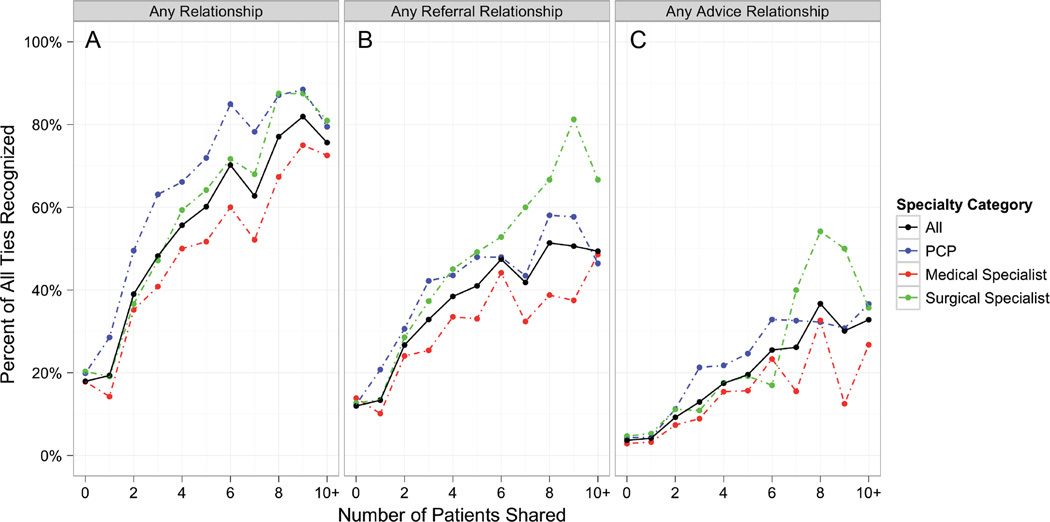
Mapping Physician Networks with Self-Reported and Administrative Data
Abstract
Objective. To assess whether connections between physicians based on shared patients in administrative data correspond with professional relationships between physicians.
Data Sources/Study Setting. Survey of physicians affiliated with a large academic and community physicians’ organization and 2006 Medicare data from a 100 percent sample of patients in the Boston Hospital referral region.
Study Design/Data Collection. We administered a web-based survey to 616 physicians (responserate: 63 percent) about referral and advice relationships with physician colleagues. Relationships measured by this questionnaire were compared with relationships assessed by patient sharing, measured using 2006 Medicare data. Each physician was presented with an individualized roster of physicians’ names with whom they did and did not share patients based on the Medicare data.
Principal Findings. The probability of two physicians having a recognized professional relationship increased with the number of Medicare patients shared, with up to 82 percent of relationships recognized with nine shared patients, overall representing a diagnostic test with an area under the receiver-operating characteristic curve of 0.73 (95 percent CI: 0.70–0.75). Primary care physicians were more likely to recognize relationships than medical or surgical specialists (po.001).
Conclusions. Patient sharing identified using administrative data is an informative ‘‘diagnostic test’’ for predicting the existence of relationships between physicians. This finding validates a method that can be used for future research to map networks of physicians.
Citation:
M. Barnett, B. Landon, A.J. O’Malley, N.L. Keating, and N.A. Christakis, "Mapping Physician Networks with Self-Reported and Administrative Data" Health Services Research, 46(5): 1592-1609 (October 2011); http://dx.doi.org/10.1111/j.1475-6773.2011.01262.x